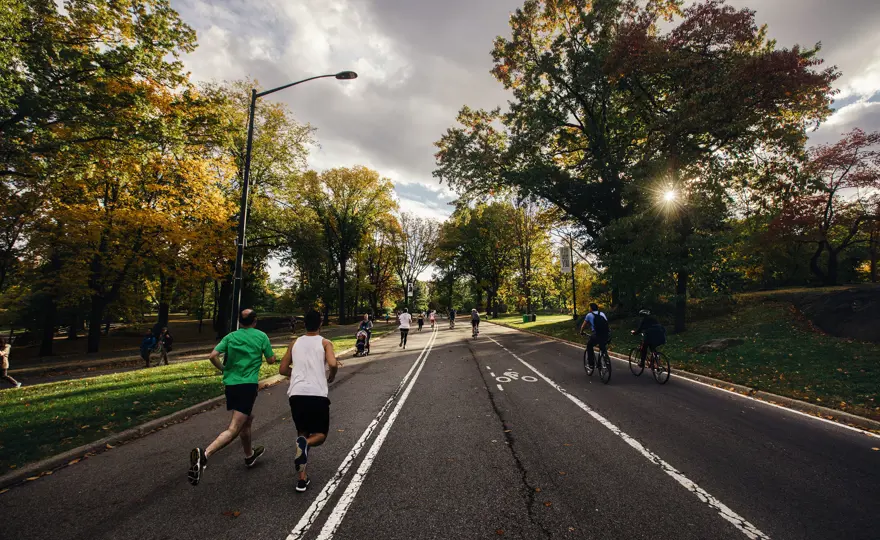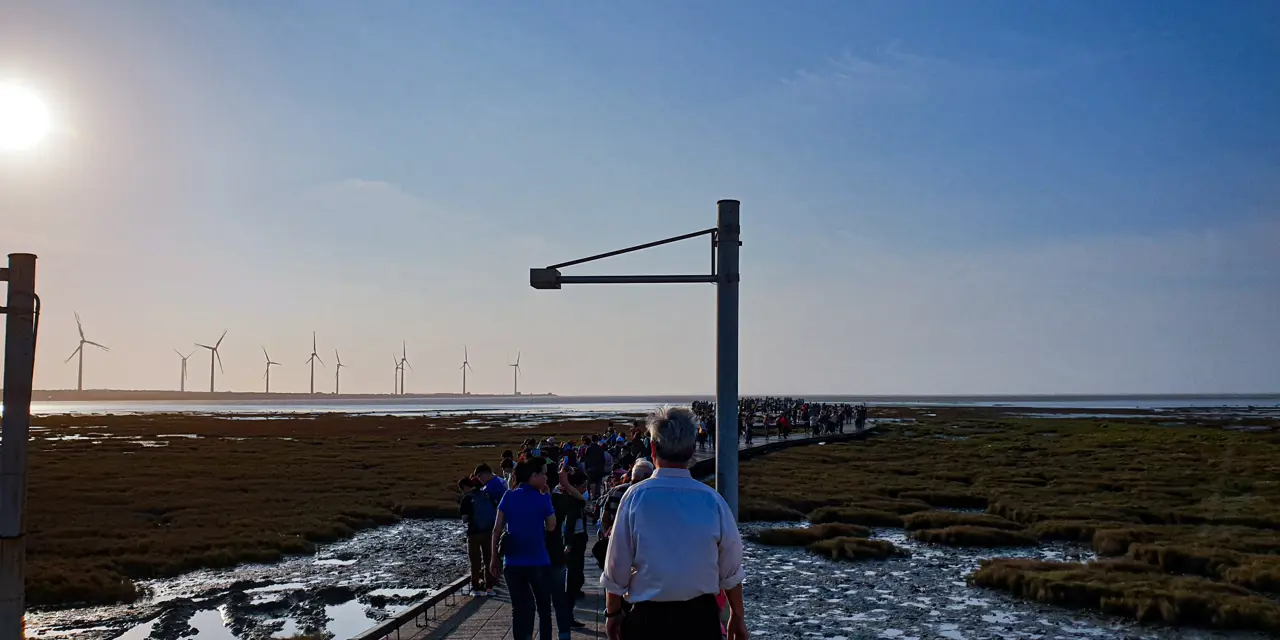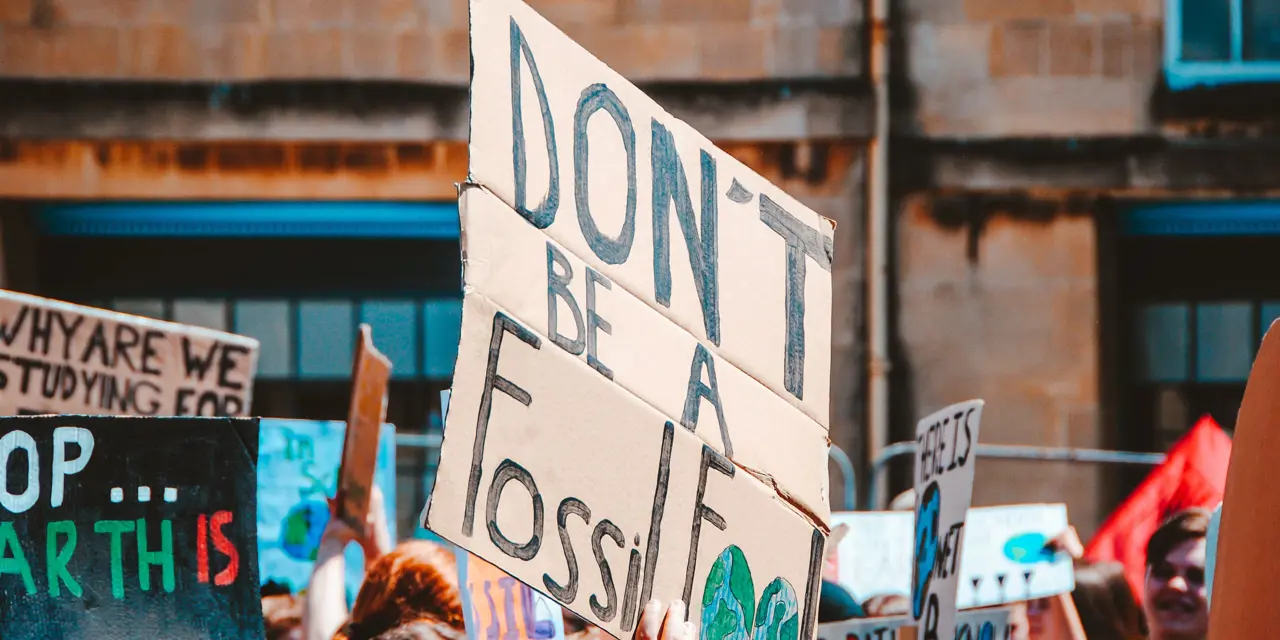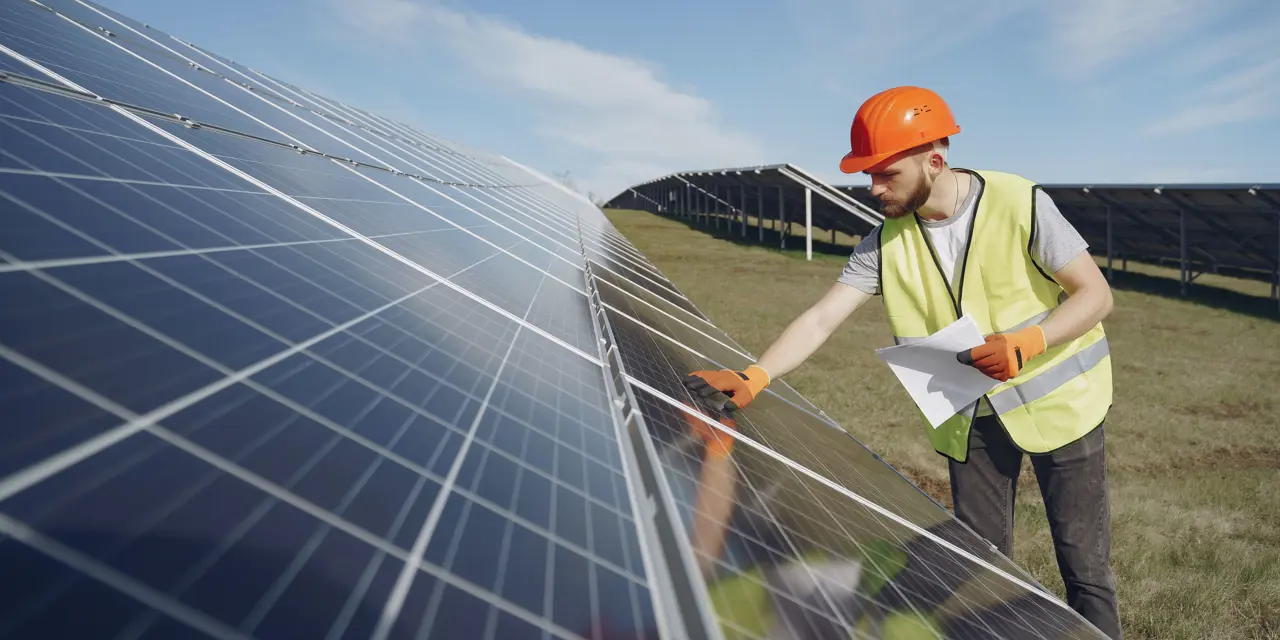
Melissa McClements
7th December 2020


This is the second in a series of articles and other creative pieces commissioned by ClientEarth to explore the debate around the most important environmental challenges we all face.
We asked climate journalist Melissa McClements to take a look at the very real possibility of a post-Covid green recovery – how close we are to achieveing it, what obstacles we still need to overcome, and how there has never been a better opportunity to work towards a greener future.
Of course, our first thoughts must be with those suffering, whether it be from the virus or the consequences of global overheating. But in the overlap of these crises we can also find hope.
The economic context is key. As coronavirus sweeps across continents once more, the world is entering the most severe recession in over a century. Not since the Great Depression has the global economy suffered such a significant hit. Therein lies the opportunity. To counter the crash, governments around the globe are unleashing unprecedented financial packages. Worldwide, politicians have pledged $12 trillion in Covid stimulus funds. This game-changing amount of money is how a cleaner, greener future could be made possible. It’s how we could change course.

We can’t recover from Covid in a business-as-usual way and expect that we can mitigate the climate crisis at some point later. The maths doesn't add up.
Now is the time. We have all heard the calls to build back better. A green recovery from the pandemic would mean reorganising ourselves to put the climate and natural world at the epicentre of our societies and economies. In reality, it’s not merely a nice option but essential. Scientists have made it clear that we’re running out of time to mitigate the worst of the climate crisis.
"Delivering a green recovery is vital for tackling the urgent and interconnected challenges of climate change and biodiversity loss," according to the Organisation for Economic Co-operation and Development.
“This is an opportunity to re-start, to press control-alt-delete,” says Professor Rachel Warren of the University of East Anglia, a lead author on the next Intergovernmental Panel on Climate Change (IPCC) assessment.
Her sentiment is echoed by Marina Andrijevic, a researcher at climate policy institute Climate Analytics in Berlin, who describes the Covid economic stimulus packages as a 'one-time shot'. “We can’t recover from Covid in a business-as-usual way and expect that we can mitigate the climate crisis at some point later,” she says. “The maths will not add up.”
While the timeframe is urgent, it’s worth understanding the scale of the opportunities on offer. Research by Nobel Prize winner Joseph Stiglitz and other high profile economists underlines the crucial nature of these stimulus funds – explaining that they are so huge they will shape our economies for decades to come and determine long-term progress on climate change. Significantly, their findings showed that a green recovery is not just better for the environment and the natural world on which all life on Earth depends – but also for the economy and job creation. They assessed the stimulus policies implemented in the wake of the global financial crisis of 2008 and concluded that green policies may actually do a better job of stimulating the economy than the old policies reinforcing the fossil fuel status quo.
Indeed, according to research from Greenpeace, the average number of jobs created per £1 million invested is 19.6. Investments in a circular economy and green buildings generate relatively higher average numbers of jobs, at 24.1 and 23.2 respectively.
“There is a lot of doom and gloom around about climate change, understandably given the catastrophic consequences that are actually occurring now for many people. But there’s also a massive opportunity. There’s a massive jobs opportunity. There’s a massive technological leadership opportunity,” says Lord Oates, the Liberal Democrats spokesperson for energy and climate change.

The money being committed to counteract the economic chaos of the Covid pandemic is more than enough. The $12 trillion pledged is three times larger than the 2008-2009 global financial crisis recovery spending and represents around 15 percent of global gross domestic product (GDP). According to a study led by Imperial College London, if just 12% of those funds were spent on low-carbon energy investments, it would be enough to limit global warming to 1.5 °C, the Paris Agreement’s most ambitious climate target.
What’s more, the demand for climate action is growing. Compared with the 2008 global economic crash, when the financial recovery was fossil-fuel-based, the context is very different. In terms of understanding the gravity of what is at stake, a cultural shift has taken place. Even within the midst of a pandemic, 70% of people are worried about climate change. It now regularly features in the media. The markets are increasingly favouring renewables. The transition to green energy is gathering apace.
The political will to act seems to be gaining momentum too. China, Japan and South Korea have all recently set net-zero emissions targets. In the European Union the pandemic bailout conditions seem to rule out environmentally damaging investments. Crucially, the change in US president means the States will re-join the Paris Agreement and thereby provide a huge boost to global climate ambitions.
The pandemic’s come at a time when we needed to really accelerate towards our net-zero emissions target for 2050.
Likewise, many in the corporate world are stepping up. Tech giants like Apple, Facebook and Google have set net-zero emissions targets. The same goes for many other global brands, including Ikea, Ford, McDonald’s, Pepsico, Boots, Starbucks and Unilever. Even some oil companies, appear to be finally taking action on the climate crisis – with BP pledging to cut oil production 40% by 2030.
Indeed, many big businesses, in the UK and Europe at least, seem genuinely engaged. “The pandemic’s come at a time when we needed to really accelerate towards our net-zero emissions target for 2050,” says James Diggle, head of energy and climate at the Confederation of British Industry (CBI). “At the end of last year, the CBI called the 2020s a decade of delivery on climate action. If we don’t use the 2020’s properly, we’re saving up trouble for down the line. It has to happen now.”
“I think the business community is well prepared. The business leaders we speak to have a real focus on doing the right thing. And even pre-Covid, there was a real wakeup call around climate, as a simple result of the net-zero target being set.”
All this means that, for the first time in a long time, there is some positivity among environmentalists. A genuinely green recovery seems like a viable possibility. But what would it look like?
“For a start, it would mean ongoing change well into the future. “If you think how long we’ve taken to get from the beginning of the Industrial Revolution, driven by using fossil fuels, to where we are now – and now we’re saying we’ve got to stop using those fuels and do it all differently, the idea that we’re going to do that in five years is obviously not right,” says Professor of Energy and Climate Policy Nick Eyre of The University of Oxford. “It involves changing the whole building stock, many industrial processes, the whole vehicle fleet. It’s a huge, multi-decadal process. So it can start now but it can’t finish now.”
In practice, Stiglitz’s paper identified five key policies with great potential for both the economy and the environment: clean physical infrastructure, building efficiency retrofits, investment in education and training, investment in nature-based solutions – such as marine life or forestry conservation – and funding research into green innovation.
Marina Andrijevic of Climate Analytics goes into more detail: “It would be direct investments into renewable energy. It would be aligning regulatory frameworks with making clean investments less risky. It would be providing education for sectors that will need to be phased out to be on a climate positive recovery. Governments are pledging massive amounts of liquidity support, so guarantee for loans will need to come with green strings attached. These can be used to support investments into clean technologies and renewable energies. Investments into research and innovation should be targeted and subsidised.”

There are a lot of co-benefits that come from green industries, on top of the economic benefits.
Such transformation could create a strong new green economy and plenty of jobs. “Investment in green infrastructure, whether it’s clean power or building retrofits, is a way of promoting demand in the short-term but also has long-term benefits, in terms of promoting productivity and growth,” says Caterina Brandmayr, head of climate policy at independent thinktank the Green Alliance. “Many of these green industries are labour intensive, which would boost employment in the short-term when a lot of industries might be laying off workers because of the pandemic. If we are then scaling up green solutions, they will employ a lot of people in those sectors.”
The changes involved would undoubtedly reverberate through our daily lives. However, many of these changes could be beneficial “There are a lot of co-benefits that come from green industries, on top of the economic benefits,” says Brandmayr. “For example, it means that people will benefit from warmer homes. The fact that their homes are better insulated will also make their energy bills cheaper. If there’s greater investment in nature restoration, people will have more access to green spaces – which also has health and wellbeing benefits. It will have implications for air quality, which again has implications for health. Particularly with the pandemic, we’ve seen that people who were exposed to poorer air quality were also more negatively affected by the virus.”
Professor Eyre also thinks some of the lifestyle changes could be welcome. “All of this will involve changes in the way that people live and that can currently be viewed negatively – but actually the spurt in veganism surprised a lot of us. And yet, it came out of people recognising: a) I can help the planet by doing this, but b) It doesn’t make my life any worse, in fact it probably makes me more healthy as well.” He cites the growth in popularity of cycling and walking – which has really taken off among certain demographics since the start of the pandemic – as another way people’s quality of life could be enhanced.
The question is, are we currently on track for a green recovery? Even though the evidence shows it’s not just essential for the health of people and the planet but also economically the most viable option, unfortunately, most policy makers are yet to embrace it. Numerous challenges need to be overcome to put the recovery on the right track.

One of the main problems is the sheer scale of the endeavour. The changes required are vast and structural. While many governments are making positive noises, there is no coherent, overarching plan for how to transform our economies – at global, regional or any national level.
“We need to have a policy framework that gives long-term visibility to the environment,” says Caterina Brandmayr. “This is vital for the private sector to be able to plan and invest in green solutions, because businesses and investors will play a massive role in delivering the energy transition. They, therefore, need a set of policies that gives a clear sense of what the priorities and pathways will be. Those policies should also be aligned across government departments – so that it’s not just one department moving in one direction and the others pulling back the other way, but there is a coherent approach.”
In her report on how to get the building blocks of the green recovery right she cites an example of what can happen when there is no proper plan. The UK government is embarking on a £12 billion affordable homes building plan, but it looks like those buildings won’t have to meet new environmental building standards – which don’t kick in until 2025. This means they’ll all need expensively retrofitted in the years to come. She describes this as 'absurd'.
Lots of countries have launched lots of green measures and funds, including the UK. But when you look at the whole picture the net impact is negative, because they’re planning to invest more in brown technologies than in green technologies.
Of course, the UK Prime Minister Boris Johnson has announced his ten-point plan for a ‘Green Industrial Revolution’. However, critics have pointed out it still lacks the necessary detail and scope. Moreover, the spending is a fraction of what Germany and France have committed towards simultaneously combatting the unemployment and climate crises. The hope is it will be the first instalment of a more comprehensive, detailed and fully funded plan.
Another major concern is corporate lobbying, especially on behalf of fossil fuel companies. It has been shown to be one of the key reasons proportionate action has not been taken on the climate crisis to date. Certainly, much more Covid stimulus money has so far been invested in fossil fuels than in green energy and tech.
Lilia Caiado Couto, a researcher at UCL who’s analysing how green pandemic economic packages are for the UN’s next IPCC assessment, says that the profile of the recovery is contradictory. “Lots of countries have launched lots of green measures and funds, including the UK. But when you look at the whole picture the net impact is negative, because they’re planning to invest more in brown technologies than in green technologies. Although they advertise their green measures a lot, behind the scenes they’re investing more in fossil fuels and emitting technologies.”
She points to research undertaken by management consultancy Vivid Economics, called the Green Stimulus Index, which analyses the environmental components of COVID-19 recovery packages. In 14 of the 17 major economies analysed, funding to projects detrimental to nature and the climate outweighed those supporting them. Of the developed countries, the United States fared worst.
This highly disappointing trend is backed by other research. According to the group of global academics behind the Energy Policy Tracker, since the beginning of the COVID-19 pandemic the countries that make up the G20 have committed $216.31 billion to the fossil fuel industries and only $146.33 billion to green energy.
Evidence exists to show lobbying by the oil and gas sector has certainly played a role in this. Edward Collins, a director of the thinktank InfluenceMap, has analysed lobbying around climate throughout the pandemic. He pinpoints two worrying trends. The first is that it’s been “…dominated by fossil-fuel-related lobbying and those interests have engaged on quite a detailed level, pushing for specific things – like project approvals, financial incentives or packages and deregulatory measures.”
He says the second trend was that those asking for green measures have tended to do so at a higher, more abstract level. They’ve been pushing for the overall framing of a green recovery rather than getting stuck into the specifics of what it might look like. The result is that the oil and gas lobby have been more successful in obtaining their demands than their green counterparts.
Going forward, the backroom dealings of the fossil fuel lobby should be countered by attaching environmental conditions to bailout money. This means central banks have a decisive role to play in tackling climate change. Thankfully, both Andrew Bailey, head of the Bank of England, and Christine Lagarde, head of the European Central Bank, have indicated they understand the need for reform.
In a recent speech, Bailey said: “We all know an economy-wide transition to net-zero is a huge task. But our experience with Covid has powerfully demonstrated our ability to adapt which should give us all comfort that the task we face should be achievable.”

It probably depends from country to country how this money will be spent over the next couple of fiscal years. It doesn’t mean that what’s written now will be set in stone. Probably with enough pressure, changes can still be made.
At this is a pivotal moment, the recovery from COVID-19 has not set us towards the cleaner, greener future for which so many hope. However, we are not yet out of time. Although the window in which we must act on climate is closing, it has not yet shut. When it comes to the recovery, we are still in the early stages. Most financial packages have not yet been spent. Most policy frameworks are not fully in place. We can still change course.
Professor Tom Moerenhout of Columbia University’s Center for Global Energy Policy thinks there are two good reasons to hope. “First, in the energy field, one of the most resilient sectors throughout Covid – one of the sectors with the best financials, the best ability to attract capital, the one that investors are most confident about – has been renewables: solar and wind. Up until a while ago this was Big Oil. Why did all of those big pension funds invest in Big Oil? It was because it was steady and reliable. What we have seen this year is that this might not always be the case. Renewables were attractive to investors before, but Covid has really confirmed it. Whatever recession we have ahead, the sector’s going to boom. Whether you’re a private investor or a government, this is something you know. And stimulus funding going into those sectors, that’s going to pay itself back over time – with nicely paid jobs attached to it as well. Another very positive thing is the electrification of transport, which also seems to be very much confirmed for the future.”
Furthermore, some in the environmental sector believe the postponement of the UN’s next big climate conference, COP26, until November 2021 is a blessing in disguise – because of the change in American presidency. Countries, especially the UK as hosts, now have time to up their climate ambitions.
The situation is constantly evolving, as Marina Andrijevic points out. “It probably depends from country to country how this money will be spent over the next couple of fiscal years. It doesn’t mean that what’s written now will be set in stone. Probably with enough pressure, changes can still be made. What’s encouraging is that we are observing quite a rapid shift in public opinion, so the fact that even in times of the global pandemic climate change remained as a top priority in the list of global threats is important.”
Now is the time to exert pressure on governments to attach green strings to bailout money and invest in: renewable energy projects, green job training, green research and innovation and rewilding the natural world. It is certainly not the time to lose hope.
“I’m a lot more hopeful than I was ten years ago,” says Professor Eyre. “And that’s probably the opposite of most people, because ten years ago a lot of people weren’t thinking about this and those of us who were were probably pretty pessimistic. I think, despite all the horrible things that have gone on in the world in the last decade, I’m actually more hopeful than I was.”
Ten years ago a lot of people weren’t thinking about this, and those of us who were, were probably pretty pessimistic. I think, despite all the horrible things that have gone on in the world in the last decade, I’m actually more hopeful than I was.Nick Eyre, Professor of Energy and Climate Policy - University of Oxford
